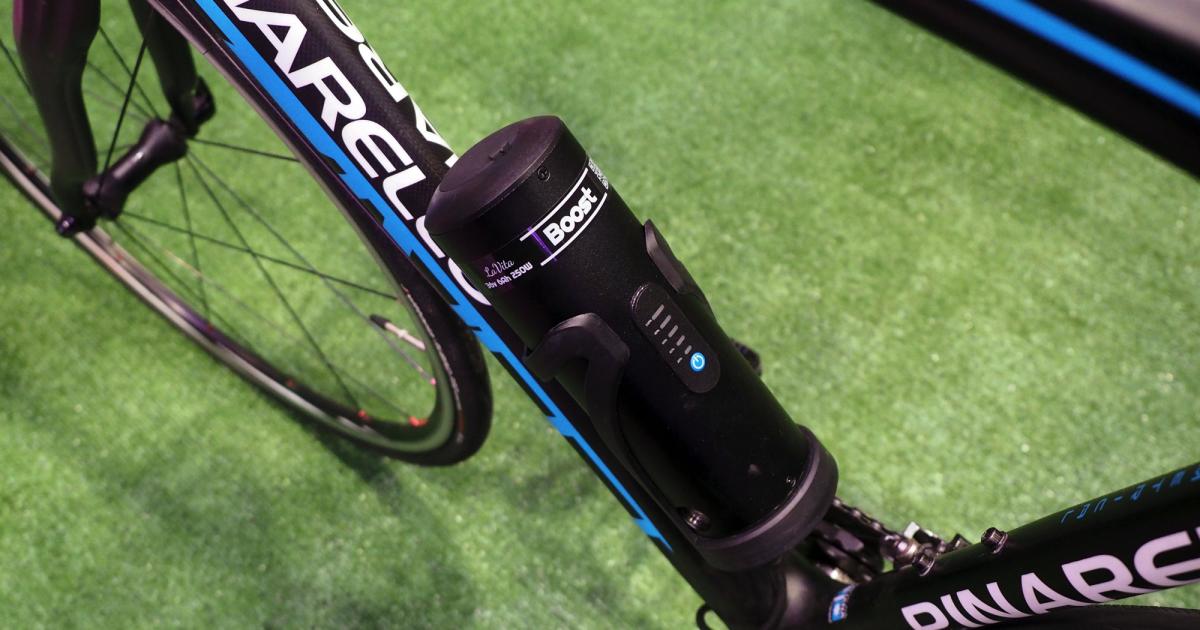
There are a number of e-bike conversion kits on the market, all offering ways to electrify your existing wheels. Boost has emerged as an option with a more elegant and easier way of doing things than some of its rivals. Rather than wire in controllers, battery hardware and a hall effect sensor, almost all of the necessary gear is built into a custom-made rear-hub motor. Everything else, meanwhile, is included in a circular battery pack that sits inside a bottle cage, or something that looks a lot like it, which is mounted to your downtube.
Whereas with, say, Swytch, which sells you a custom front wheel for you to attach to your bike, Boost goes on the back. That means the initial installation is a little more intensive, since you’ll need to add your cassette, string-in the chain and get the analog stuff all set up nicely. Or, you know, ask the technicians at your local bike repair store to do it for you if you’re a ten-thumbed menace to engineering like me. But, after that point, all you’ll need to do is screw in the bottle cage and ziptie a wire that runs from the rear wheel the downtube and you’re pretty much set.
It’s screenless, and part of this is because all of the torque sensors are included within the motor, and also to help keep costs down. Users can, if they need, connect to the companion app where they can set the power assist in either Eco or Boost modes. You’ll also get a short speed-boost option to help you get away from traffic, which maxes out the motor for a very brief period of time. The app also has a dashboard mode so, if you mount your phone on the handlebars, you can keep an eye on your speed, distance and battery level.
And the battery itself has a USB-A port hidden under a dust cover, enabling you to charge your device, or run a USB-powered light set, while riding.
Since the Boost was set up at the UK’s Cycle Show today, I was able to give it a go while hooked up to a turbo trainer. I found that it didn’t take very long at all before the level of boost the eco mode offered felt like it would be more than enough to get me across town each day. When the boost mode was activated, it quickly felt like too much power, an option you’d only ever need when you’re tackling steep hills and little else.
In terms of pricing, Boost is presently available in the UK and costs £695 when installed by a local cycling store. If you fancy tackling the installation yourself, you can also pick up the kit for £645, although the company also offers the motor and battery set for people to build their own wheels. It’s certainly an interesting twist on e-bike conversion kits, and one I’d be very interested in trying for myself in future.
Article From & Read More ( Boost’s e-bike conversion kit offers elegant and discreet power - Engadget )https://ift.tt/MNUcJrl
Technology
No comments:
Post a Comment